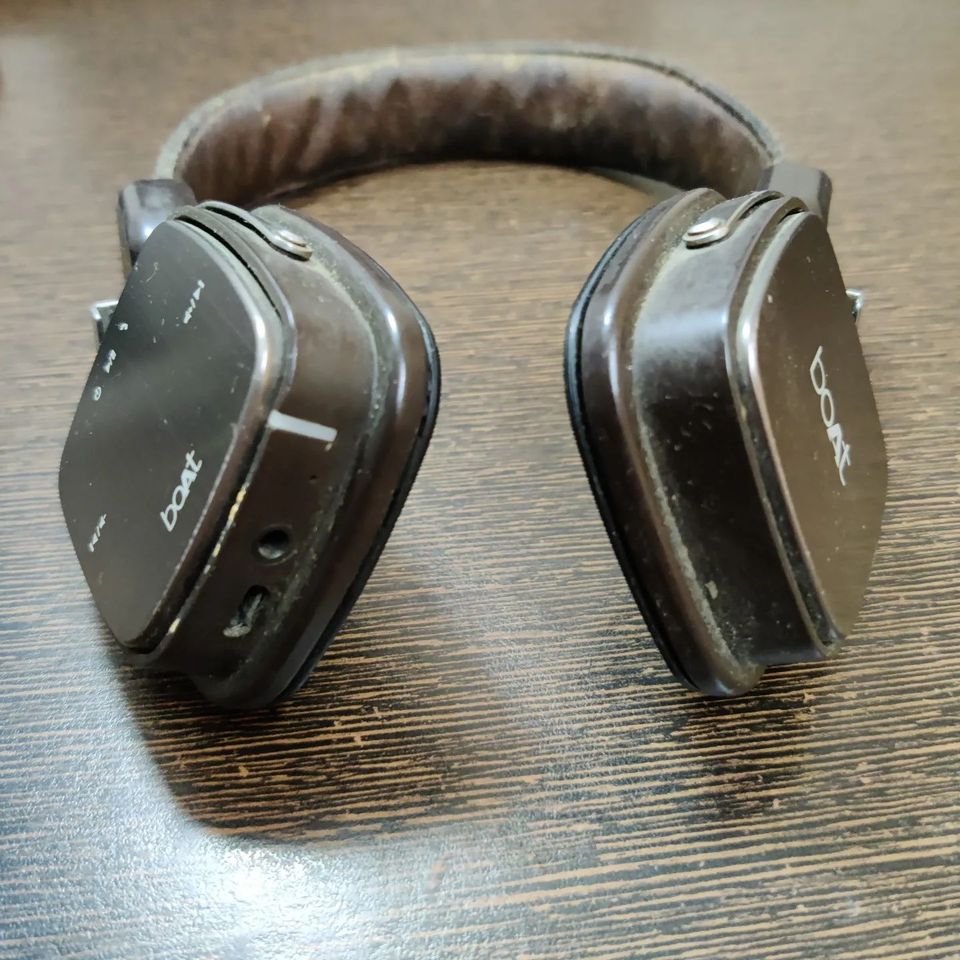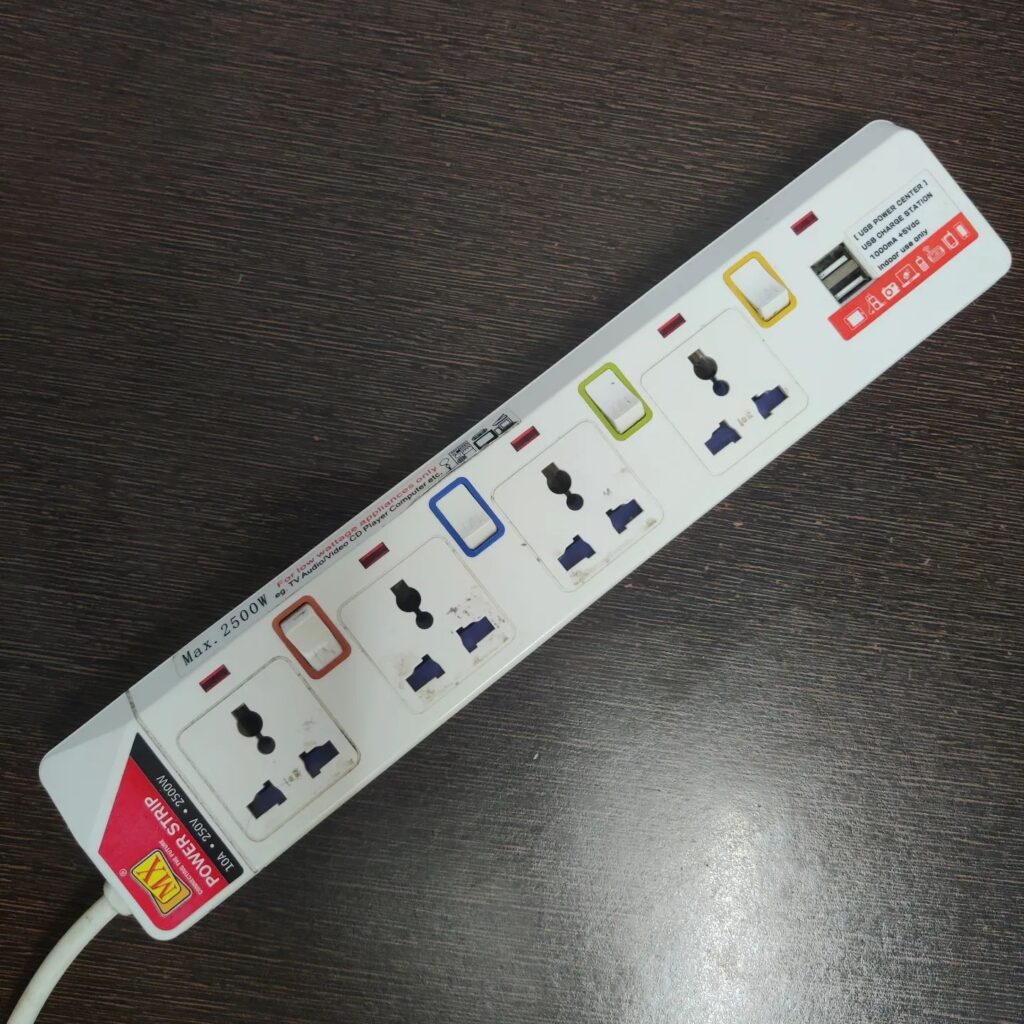
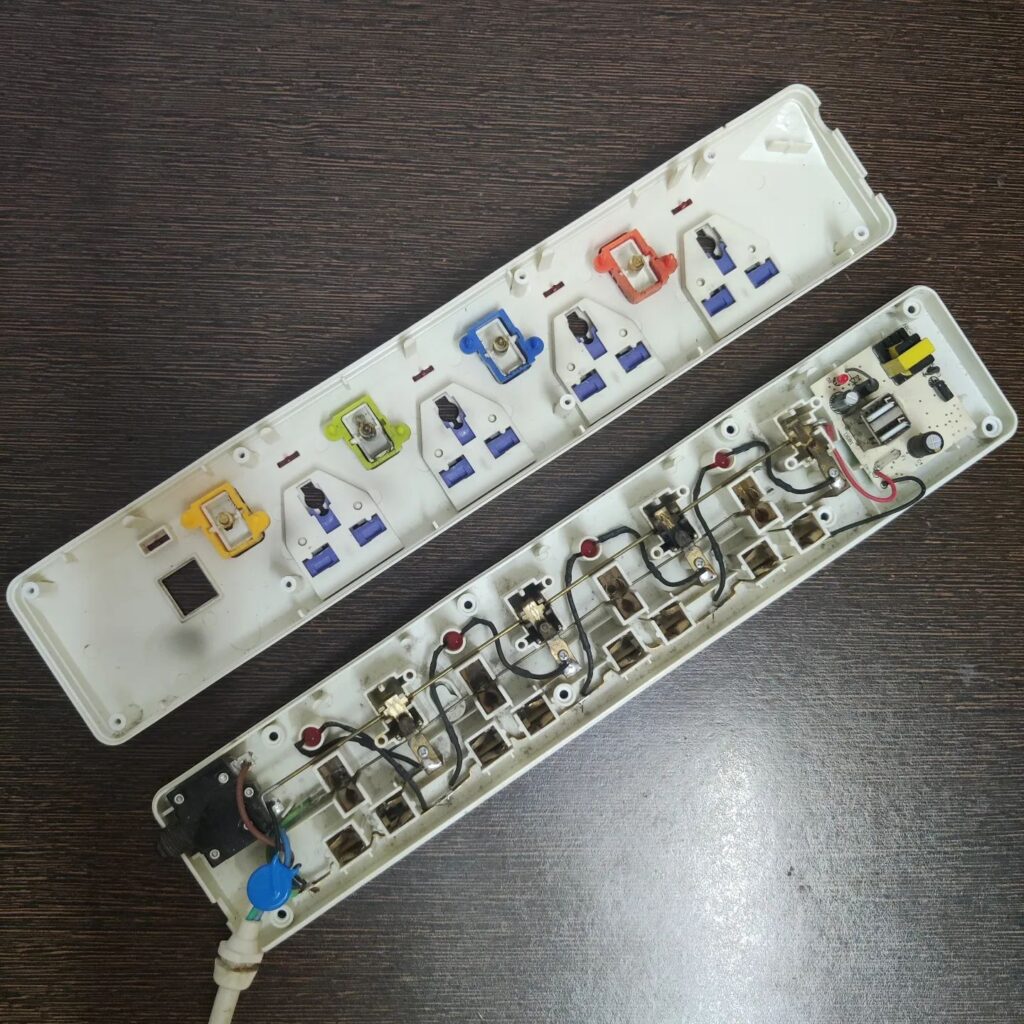
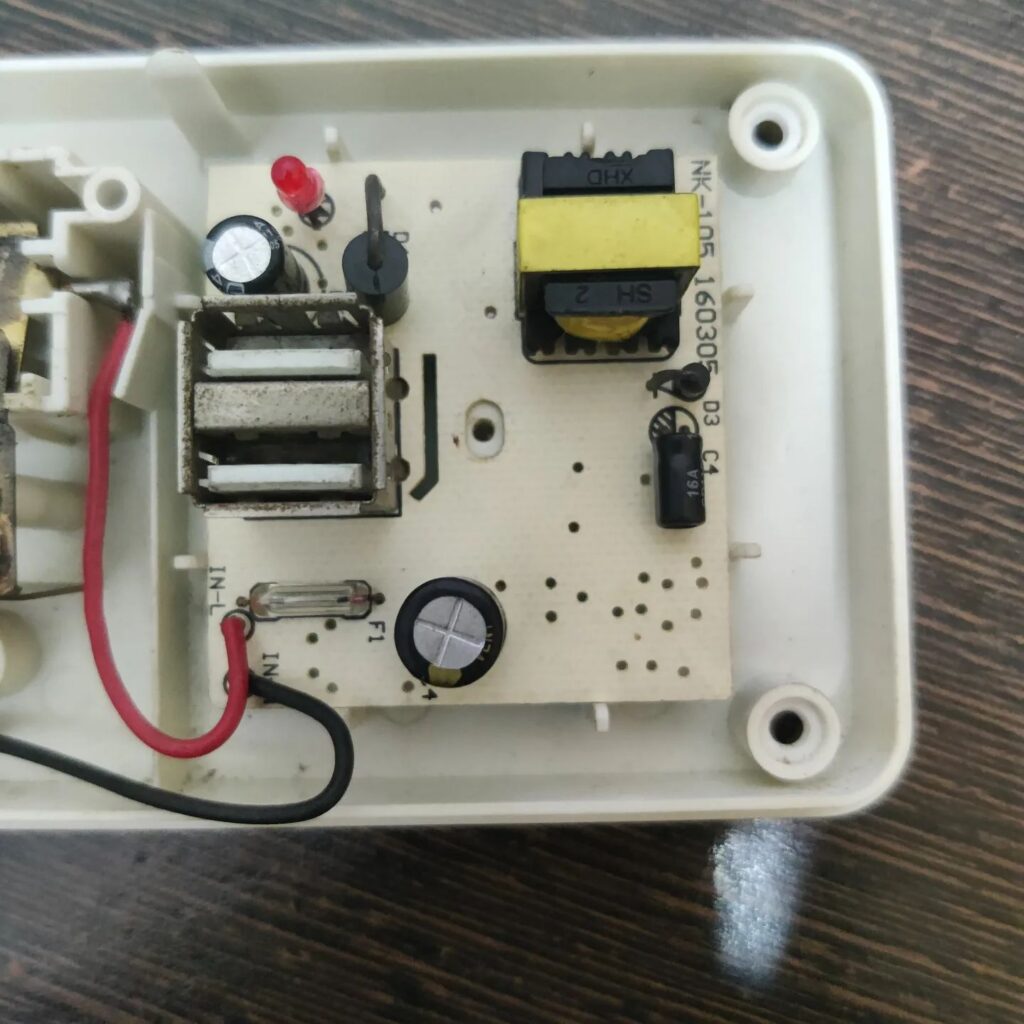
I have been using this 10A(2.5KW) MX brand powerstrip for the last few years now. It’s decently built and has individual port control for switches. These ones come with a 5V USB charger port which delivers up to 1A of current. Since they are relatively cheap, wanted to check out the mechanism of the 220V to 5V generation part. I was expecting some very cheap.
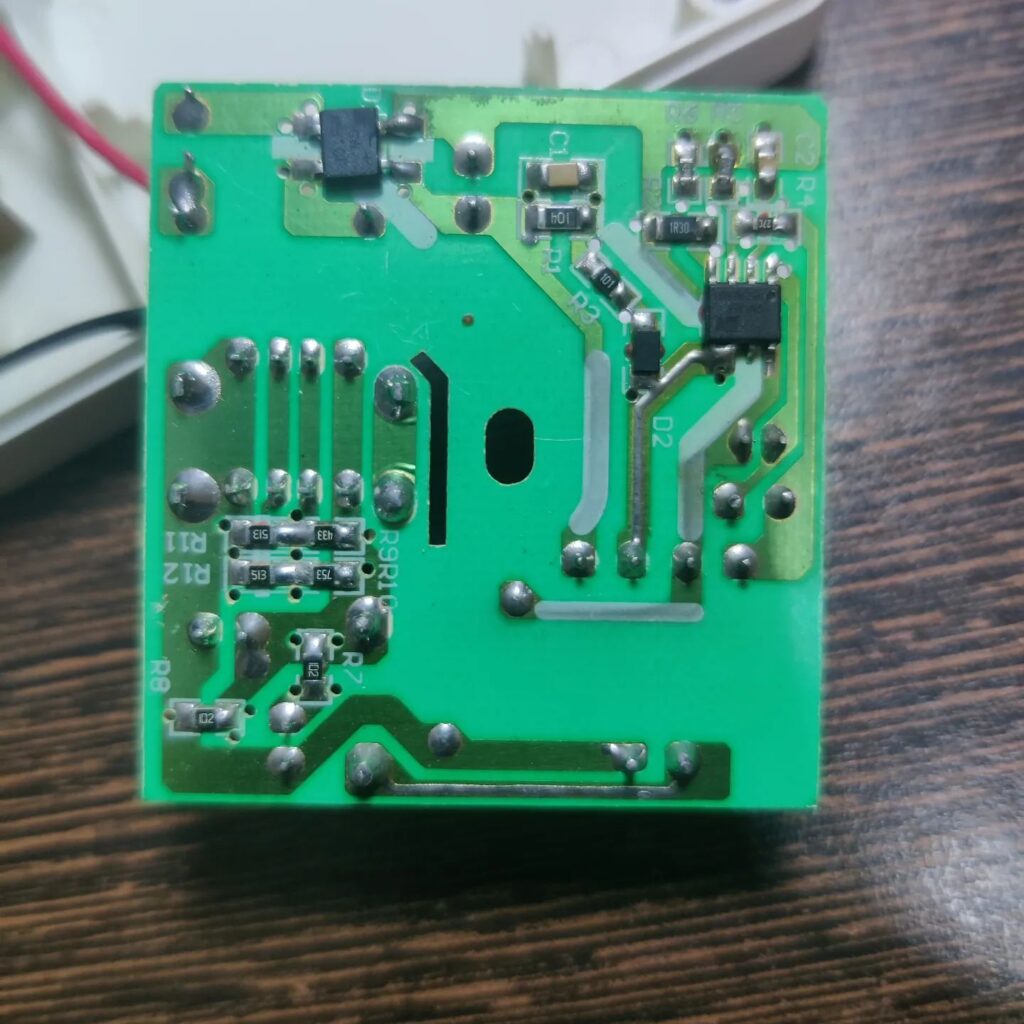
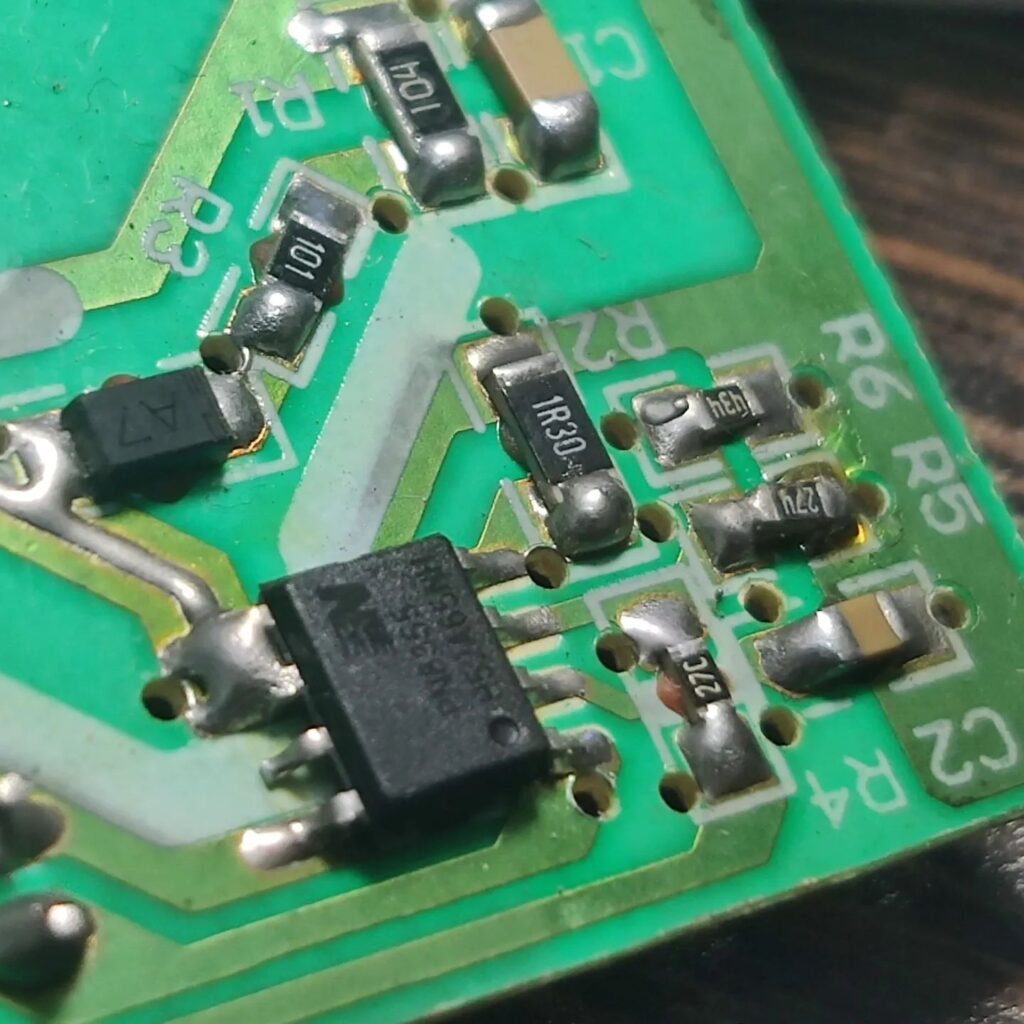
The teardown process was straightforward (Just a few screws in the back). I think the PCB is made with the cheaper fibreglass equivalent of FR4 material and is one-sided. The circuit is fairly decently designed for the price they sell it at. The AC input is fed through a glass fuse and run through MB10F IC from Diodes Inc, which is a single chip full bridge rectifier to convert 220V AC to DC. This high voltage DC is fed to PN8335 IC which is a buck converter with active power factor correction. It has a tiny transformer providing some isolation to the DC side and provides the feedback to keep output at 5V. The high voltage DC is switched at high frequencies to generate the 5V after rectification at the output. This is similar to the circuits you would find in cheaper DC power adapters. To be honest, they have given a slot cut out for high voltage AC and DC sections so that’s nice.





